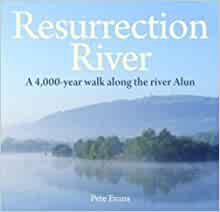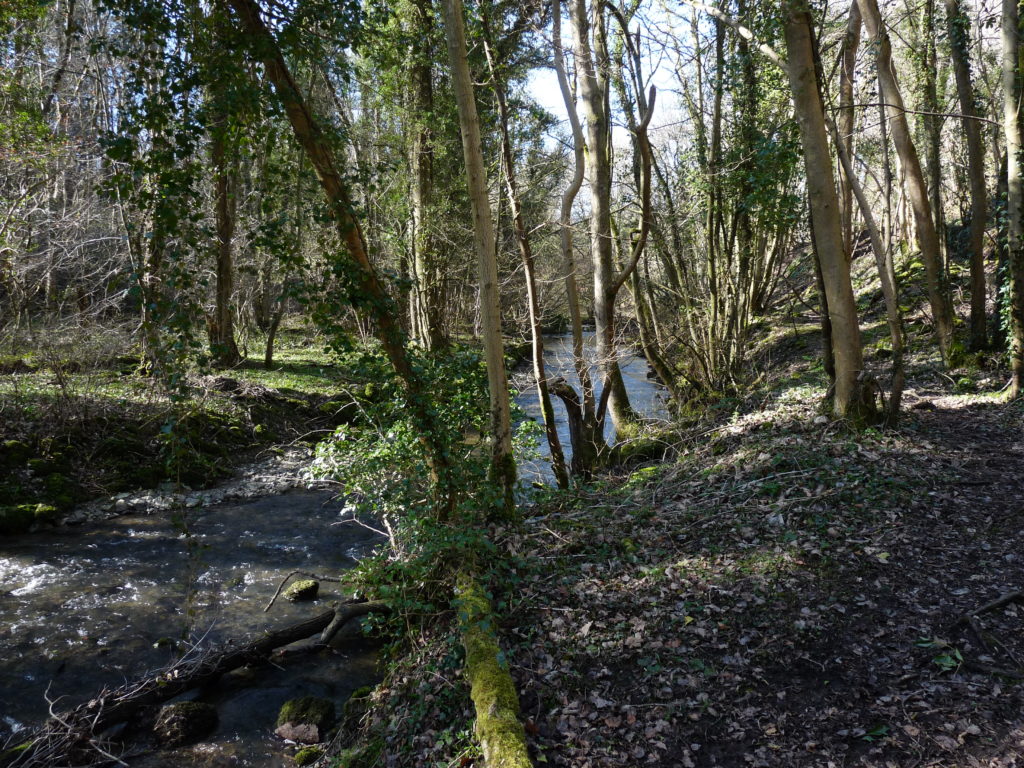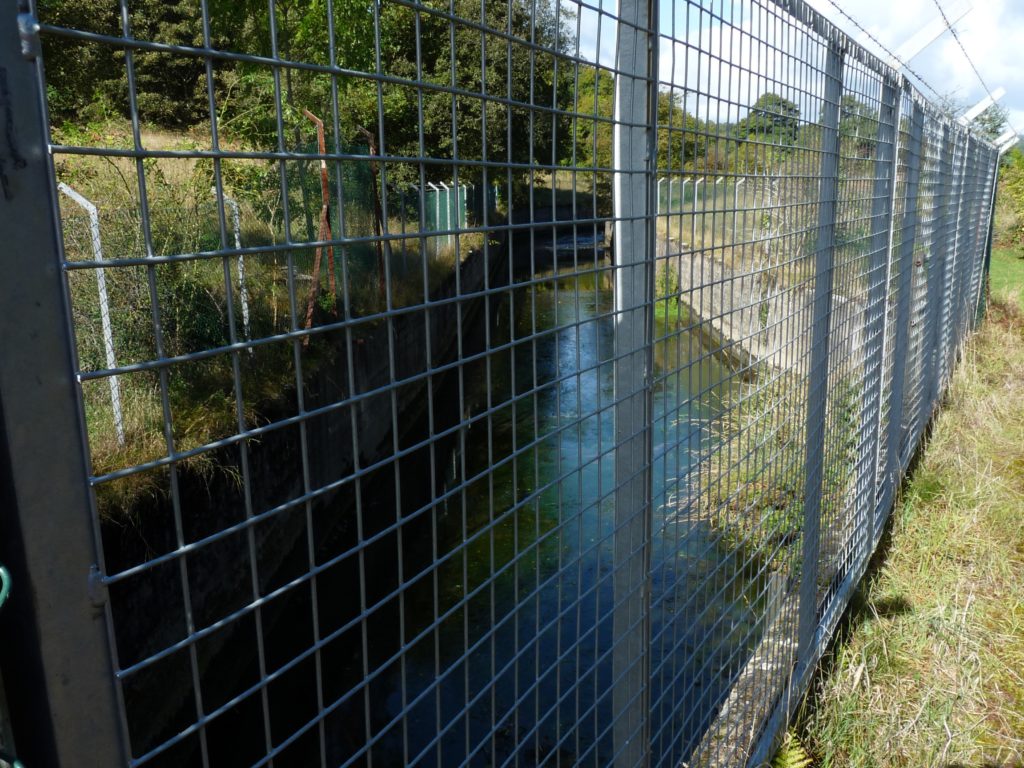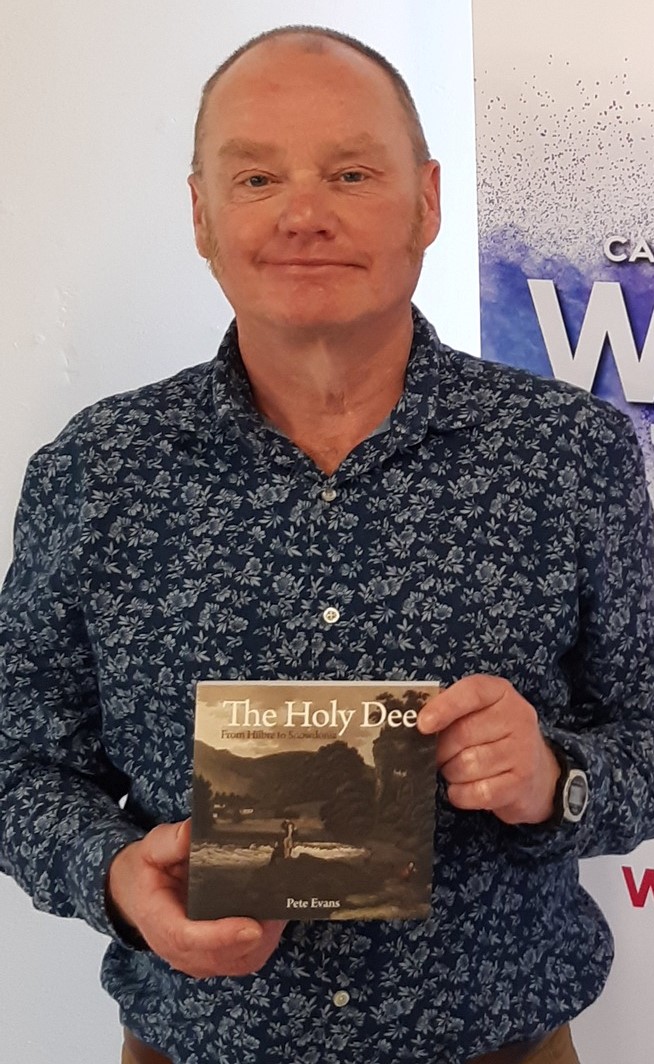Book Review – January 2023
The Alun is a river of tranquillity, of droughts, floods and trade; fortunes made and lost. At times it doesn’t exist at all and yet at the same time it is two rivers!

For anyone who has lived in north-east Wales, who likes to get out and about and enjoys walking, the River Alun is a constant if low-key presence. As a river its demeanour is rarely spectacular and it flows through only one town of any significant size. Yet its labyrinthine course from the Denbighshire hills, looping across Flintshire and through the rural outskirts of Wrexham before joining the River Dee at the English border means that, as you travel through the area, the river seems to pop up everywhere.
Pete Evans certainly seems to feel this way. For many years he has lived in a village called Hope close to the banks of the lower Alun. He too refers to the meandering of the Alun and its seemingly ubiquitous presence in this part of the world. But it was not until I read his Resurrection River that I realised there were two branches of the Alun, one the natural course of the river and the other, man-made, heading off in a totally different direction. It was not just a case of the Alun seeming to be in two places at once, it really was its own watery doppelganger.
To research Resurrection River Pete Evans followed the course of the Alun on foot from its source in the hills above Llandegla in Denbighshire toits confluence with the Dee near Farndon where Wales meets Cheshire. He also took a diversion across Flintshire to trace the major underground man-made branch of the river to where it joins the Dee estuary near Flint.
Unlike other rivers, such the Dee or Thames, there is no established walking trail following the entire 30-mile length of the Alun, so Evans had to improvise a route. His first problem, however, was finding the definitive source among the myriad streams and springs on the rain-sodden south Clwydian hillside where the OS map suggests it starts. In fact, Evans returns to that hillside in his final chapter, after completing the rest of the journey, as he was never completely satisfied that he had found the actual source. I shall avoid any further spoilers about how this final quest turned out.

The upper Alun near Loggerheads
The Alun, Evans makes clear, was a working river. Its upper reaches pass through an extensive area of limestone and, since before Roman times, it has been mined for lead. North-east Wales also had an extensive coalfield and the Alun flowed right through it. Evans records at least 35 mills, mostly derelict, along the 30-mile length of the river. These were used variously for corn milling and to provide power for the lead, tinplate, timber, paper and brick-making industries.
The most extensive industrial intervention on the Alun is the Victorian-era Milwr Tunnel. This runs some 10 miles from the upper Alun at Cadole to join the Dee estuary at Bagillt. It was built to help drain Flintshire’s lead and zinc mines and still discharges an average 23 million gallons of water a day.

The main river continues from Cadole, often disappearing completely from view, especially in summer, into the limestone caverns below the valley floor. It passes through the Valley Works at Rhydymwyn, formerly a chemical weapons factory and now a nature reserve and then on through the county town of Mold, home of the renowned Bronze Age gold cape. The lower Alun then winds its way through Hope and Caergwrle, with its former Victorian spa, skirts north of Wrexham through the intriguingly named Wilderness Valley and ends up at the Dee just beyond Rossett.

The Alun at the Valley Works
Evans’s book is richly illustrated with his own colour photographs and he shares his extensive knowledge of the human and natural history of the area in a very readable fashion. But the story, he suggests, is never finished:
The Alun is a perpetual story, constantly changing, continually having her secrets revealed. New chapters could be added, pages tweaked for time-circular eternities.
Pete Evans
 Pete Evans is a writer and tour guide based in north-east Wales. He is the author The Holy Dee and leads walking trips.
Pete Evans is a writer and tour guide based in north-east Wales. He is the author The Holy Dee and leads walking trips.

I love books about rivers and especially books about Wales and rivers. Thank you for this – it will be perfect for Paula’s Dewithon in March. I am going to send off for a copy. Also thank you for your support of my blog.
Thanks Frances. That sounds like a great idea.
Hi Bobby,
Just seen this review of Resurrection River, many thanks, much appreciated!
You may also be interested in my other book – The Holy Dee, which is written in the same style.
I really enjoyed walking them, they both hold so many tales, often written in the landscape.
Thanks again,
Pete
Thanks Pete. I love walking along the Dee too and have covered most of it’s length, in sections, over the years. I will make a point of seeking out The Holy Dee.